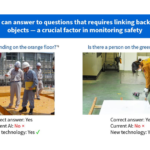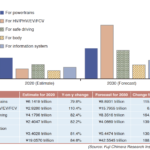ASIA ELECTRONICS INDUSTRYYOUR WINDOW TO SMART MANUFACTURING
Toshiba Puts Weight on Power Semiconductor Business
In the company’s business strategy mapped out recently, Toshiba Corporation set forth the strengthening of its power semiconductor sector. The company aims to do this by spinning off Device Co., a new company for the device business.

Investment Plans
Toshiba also laid down plans to invest 260 billion yen (US$1.99 billion) by FY2025. This is targeted to increase the new company’s production capacity for silicon power semiconductors to about 1.7-fold. The company will also increase the production capacity of nearline hard disc drives (HDDs) to two-fold.
It will also inject 310 billion yen (US$2.68 billion) in research and development (R&D) to expand lineups of silicon power semiconductors. The company will also advance the development of silicon carbide (SiC) power semiconductors with high withstand voltages. Through these moves, Toshiba plans to increase sales from 860 billion yen (US$7.43 billion) in FY2021 to 1.01 trillion yen (US$8.73 billion) in FY2025.
Amid the expanding investments to promote carbon neutrality and digitization, Toshiba expects that the market will expand in the medium to long term. Based on the company’s assessment, semiconductors, excluding memories, will increase 4 percent, and power semiconductors will increase 7 percent annually between 2021 and 2025. The company expects semiconductors and power semiconductors particularly for automotive and industrial applications will increase.
Under these circumstances, Toshiba plans to increase sales of semiconductors from 320 billion yen (US$2.77 billion) in FY2021 to 370 billion yen (US$3.20 billion) in FY2025. Part of the efforts to accomplish this is to bolster production at KAGA TOSHIBA ELECTRONICS.
Toshiba targets to land within the top three in electronics business by accelerating the development of technologically superior products.

Three Pillar Strategies
The first strategy is the development of products with superior technologies. Here, Toshiba will provide power MOSFET solutions in accordance with various applications depending on withstand voltages. The company will also advance customization of power devices with high withstand voltages that meet customers’ requirements for performance.
The second strategy is the strengthening of relationships with major customers in the industry. The company intends to maintain and strengthen domestic base and promote overseas development of the business.
The third strategy is the swift increase of production capacity. The company will install the most advanced production lines to secure room for future expansion.
Focus on Power Semiconductors
Toshiba will also step up efforts in the production of silicon carbide (SiC) and gallium nitride (GaN) compound semiconductors. The company expects the demand for compound semiconductors to increase in electrified vehicles, railways, offshore wind power generation systems, and data centers.
Based on this assessment, Toshiba will use the knowhow accumulated in the production of high withstand voltage SiC devices for railways to SiC devices for vehicles. The company will also accelerate development through the use of NuFlare Technology’s equipment, advance larger diameter wafers by promoting installation of 200mm production lines, and conclude long-term purchase contracts with materials manufacturers, thereby boosting growth.
Moreover, the demand for storages is also expected to expand along with the increase in the data generation amount. Toshiba expects that data generation amount will increase 2.2-fold and storage capacity increase two-fold between 2021 and 2025.
Toshiba plans to double its production capacity for nearline HDDs between FY2020 and FY2025. The company plans to establish its second base in China, while continuing to introduce management resources to its production base in the Philippines. Through these moves, the company targets to reinforce business continuity plan (BCP), improve logistics to Chinese customers, and enhance relationships with Chinese magnetic head suppliers.
Accelerates R&D
To bolster its R&D system in the coming years, Toshiba will establish the R&D Center for Semiconductor & Storage (tentative name) under Device Co. This will be put up after spinning off its devices sector as Device Co., shifting from the present system featuring R&D centers of Toshiba Corporate Lab. and Toshiba Electronic Devices & Storage. With this move, the company will increase its personnel to 3.5-fold, and advance product development in accordance with Device Co.’s roadmap.
Toshiba is also considering the establishment of a clean room for advanced R&D for power semiconductors in Yokohama in Japan’s Kanagawa Prefecture.
Also, the company provides strategic products for infrastructure business, thereby enhancing synergy. Device Co. is presently developing high withstand voltage multichip packages, and other devices.
Toshiba also targets to enhance Device Co.’s position in the market by providing competitive mask writes and epitaxial growth systems.




